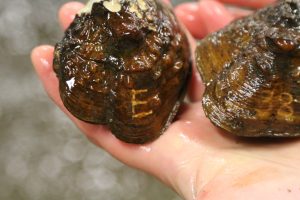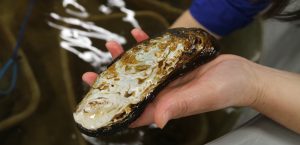Resurrecting the Riverkeepers

were destined to be cut into cubes, polished round, and implanted in saltwater oysters to grow cultured pearls. “Every one of them was almost a twenty-dollar bill,” says David Sims, then a game warden with the Tennessee Wildlife Resources Agency who was charged with surveying these bivalves. Poachers could wipe out an entire bed of mussels in a single night.
Today, 25 years later, Sims can rattle off the common names of freshwater mussel species like a lineup of Seussian characters: Appalachian monkeyfaces, white wartybacks, Tennessee heelsplitters, fat pocketbooks, shiny pigtoes, pistolgrips, and spectaclecases. The orange-footed pimpleback conceals in its bumpy case a fleshy appendage the color of Orange Crush soda. “They’re hard to find,” Sims says, lifting a glistening mussel from a gurgli
Mussels are critical, if unsung, players in river systems. They spend their lives half-buried in sediment, stabilizing riverbeds and preventing erosion. There they serve as food for birds, muskrats, and otters; and when they die, their shells are adopted as secondhand homes by crayfish and aquatic insects. Most importantly, mussels filter river water—up to 20 gallons per mussel per day by some estimates. They live off the algae and plankton gleaned from this filter feeding, and in the process remove silt and toxic substances from the water, including some heavy metals, harmful bacteria, pharmaceuticals, and endocrine-disrupting chemicals such as PCBs. “They’re like little miniature treatment plants,” says stream ecologist Jesse DiMartini, of the DuPage County Forest Preserve District in Illinois.
